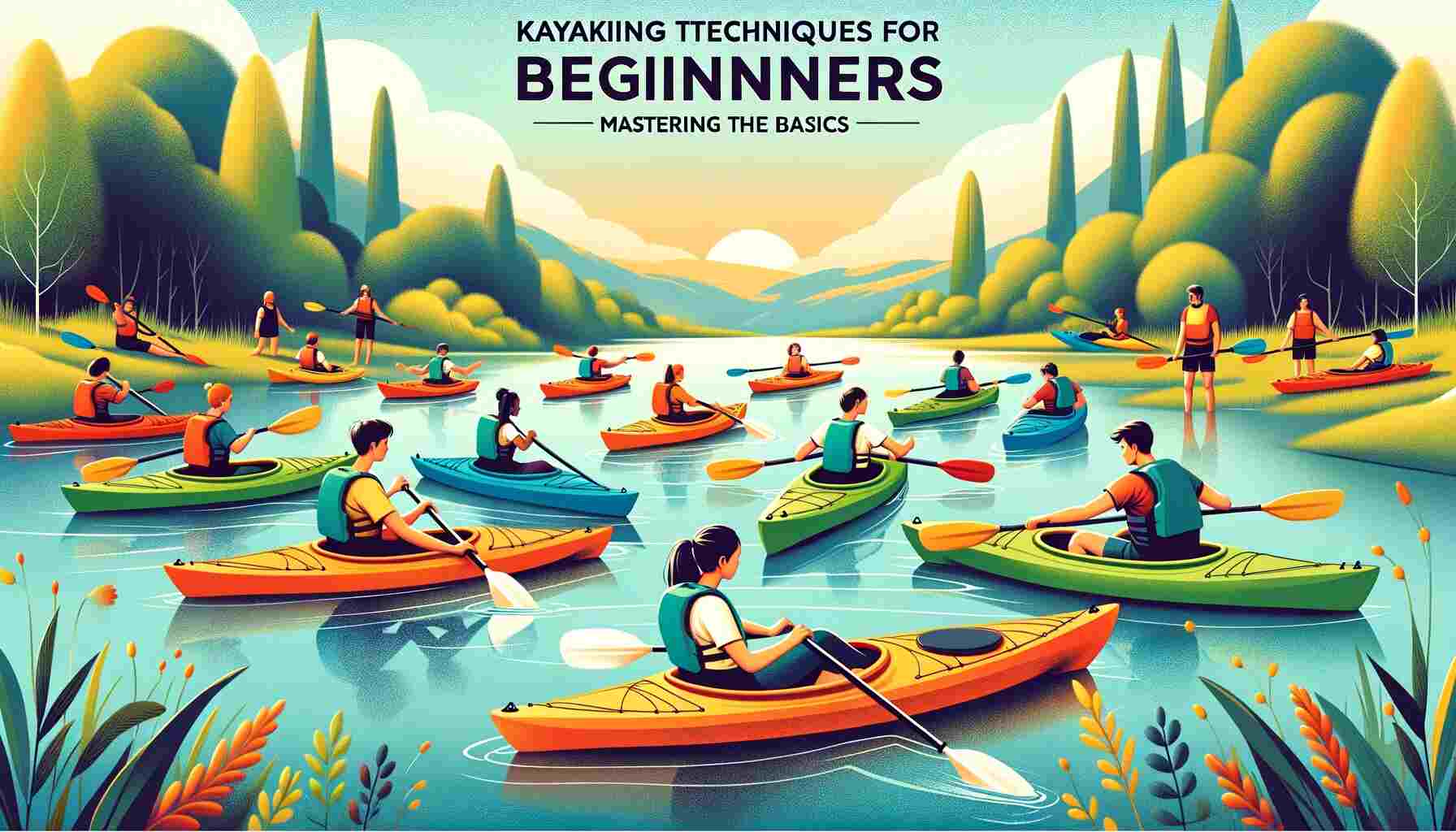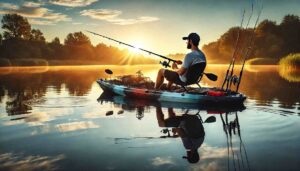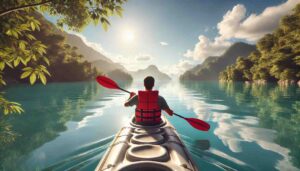Kayaking is a fantastic outdoor activity that allows you to immerse yourself in nature while enjoying a full-body workout. Whether you’re gliding across tranquil lakes, navigating gentle rivers, or tackling more challenging white-water rapids, kayaking offers endless opportunities for adventure and relaxation.
If you’re new to kayaking, this comprehensive guide will help you get started with the essential techniques and skills you need to become a confident paddler. We’ll cover everything from choosing the right kayak to mastering fundamental strokes, ensuring your safety on the water, and exploring some tips and tricks to enhance your kayaking experience.
Getting Started
1. Choosing the Right Kayak
Before you hit the water, it’s crucial to select the right kayak. Here are some key factors to consider:
Kayak Types
- Recreational Kayaks: Ideal for beginners, these kayaks are stable and easy to control. They’re perfect for calm waters like lakes and slow-moving rivers.
- Touring Kayaks: Designed for longer journeys, touring kayaks are efficient and track well. They’re a great choice if you plan to explore larger bodies of water.
- Whitewater Kayaks: These kayaks are shorter and more maneuverable, suitable for navigating turbulent rivers and rapids.
- Sea Kayaks: If you dream of kayaking along the coast or exploring open water, sea kayaks are designed for stability and can handle rougher conditions.
Kayak Size
Ensure that the kayak you choose is the right size for your body. Your weight, height, and comfort should all be taken into account. Most kayaks have weight capacity guidelines, so pay attention to these recommendations.
Sit-In vs. Sit-On-Top Kayaks
- Sit-In Kayaks: These kayaks have an enclosed cockpit, which provides more protection from the elements and keeps you drier. They are suitable for cooler climates and can be used for longer trips.
- Sit-On-Top Kayaks: These kayaks have an open design and are easier to get in and out of. They are a great choice for warm weather and are more user-friendly for beginners.
2. Essential Gear and Safety Equipment
Before you venture onto the water, make sure you have the following gear and safety equipment:
- Paddle: Choose a paddle of the appropriate length and style for your kayaking type. For beginners, a lightweight paddle with a comfortable grip is ideal.
- PFD (Personal Flotation Device): A PFD is a must for kayakers of all skill levels. Ensure it fits snugly and is designed for water sports.
- Helmet (for Whitewater Kayaking): If you plan on tackling rapids, a helmet is essential to protect your head from rocks and obstacles.
- Spray Skirt (for Sit-In Kayaks): This keeps water out of the kayak and helps you stay dry in rough conditions.
- Bilge Pump: In case your kayak takes on water, a bilge pump will help you remove it quickly.
- Whistle: A whistle is a simple but effective way to signal for help or alert others to your presence.
- First Aid Kit: Always have a basic first aid kit on hand for minor injuries or emergencies.
3. Learning Basic Kayaking Terminology
Before you hit the water, familiarize yourself with some essential kayaking terminology:
- Bow: The front of the kayak.
- Stern: The back of the kayak.
- Hull: The bottom of the kayak.
- Cockpit: The opening where you sit in the kayak.
- Paddle Blade: The wide part of the paddle used to propel the kayak.
- Stroke: A specific movement used to paddle the kayak.
- Forward Stroke: The basic paddling technique to move the kayak forward.
Now that you have your kayak and gear sorted, let’s dive into the fundamental techniques you’ll need to become a proficient kayaker.
Basic Kayaking Strokes
Mastering basic kayak strokes is essential for efficient paddling and control on the water. Here are some key strokes every beginner should learn:
1. Forward Stroke
The forward stroke is your primary propulsion technique and the foundation of kayaking. Follow these steps to perform it correctly:
- Sit with good posture, facing forward, and grip the paddle with both hands shoulder-width apart.
- Reach forward and immerse the paddle blade fully in the water near your toes.
- Pull the paddle towards your hips in a straight line, keeping the blade parallel to the kayak.
- Rotate your torso and engage your core muscles for added power.
- As the blade reaches your hip, lift it out of the water and repeat on the other side.
- Alternate strokes on both sides to maintain a straight course.
2. Reverse Stroke
The reverse stroke is used to slow down, stop, or move backward. Follow these steps:
- With your hands shoulder-width apart, extend the paddle behind you, submerging the blade fully in the water.
- Push the water away from you in a straight line by pulling the paddle towards your toes.
- Maintain control and keep the kayak steady while moving backward.
3. Sweep Stroke
The sweep stroke is essential for turning your kayak. It’s particularly useful when you want to make a sharp turn. Here’s how to perform it:
- Reach out to the side with your paddle blade, submerging it fully in the water.
- Keep your top hand high and your bottom hand low.
- Sweep the paddle in an arc away from the kayak’s hull.
- As you complete the sweep, the kayak will turn in the opposite direction of the stroke.
4. Draw Stroke
The draw stroke is used to pull the kayak sideways. It’s handy for avoiding obstacles or moving closer to something, like a dock or another kayak:
- Extend your arm and paddle blade out to the side of the kayak.
- Submerge the blade in the water and sweep it towards the hull while keeping it parallel to the kayak.
- The kayak will move in the direction of the stroke.
5. Brace Stroke
The brace stroke helps you maintain balance and prevent capsizing. If you feel your kayak tipping, use the brace stroke to recover:
- Hold your paddle horizontally across the water surface, with both arms extended.
- Push down on the water with the paddle to stabilize the kayak.
- Shift your weight towards the side you’re bracing on to maintain balance.
6. Edging
Edging involves tilting your kayak slightly to one side to improve stability and control. You can edge the kayak while paddling, especially in rough water or when making turns. Practice edging both left and right to become a more skilled kayaker.
Launching and Landing
1. Launching Your Kayak
Before you can start paddling, you need to launch your kayak properly. Here’s a step-by-step guide:
- Position your kayak near the water’s edge, ensuring it’s facing the water.
- Straddle the kayak with your knees on either side of the cockpit.
- Lower yourself into the cockpit, making sure your PFD is securely fastened.
- Push off from the shore and start paddling.
2. Landing Your Kayak
Landing your kayak is just as important as launching it. Here’s how to do it safely:
- Approach the shore slowly, aiming to land parallel to the shore.
- Keep your hands on the paddle until you’re close to the shore.
- If you have a sit-in kayak, remove the spray skirt before exiting.
- Carefully step out of the kayak onto the shore.
Safety Tips for Beginners
Safety should always be your top priority when kayaking. Here are some essential safety tips for beginners:
1. Wear Your PFD
Always wear your personal flotation device (PFD) while kayaking. It’s your lifeline in case of an emergency.
2. Learn Self-Rescue Techniques
Practice self-rescue techniques, such as how to re-enter your kayak after capsizing. Knowing what to do in case of an accident can be a lifesaver.
3. Check the Weather
Before heading out, check the weather forecast. Avoid kayaking in strong winds, thunderstorms, or other hazardous conditions.
4. Be Mindful of Tides and Currents
If you’re kayaking in coastal areas, be aware of tides and currents, as they can significantly affect your paddling experience.
5. Tell Someone Your Plans
Always let someone know your kayaking plans, including your expected return time and location. This ensures that someone can alert authorities if you don’t return as planned.
6. Respect Wildlife and the Environment
Observe wildlife from a safe distance and avoid disturbing them. Leave no trace by packing out all your trash and following Leave No Trace principles.
7. Stay Hydrated and Sunscreen
Bring plenty of water to stay hydrated, and apply sunscreen to protect your skin from sunburn while on the water.
8. Dress Appropriately
Dress for the water temperature, not the air temperature. Hypothermia can set in quickly in cold water.
Tips and Tricks for a Better Kayaking Experience
1. Practice Makes Perfect
Don’t expect to become an expert kayaker overnight. Practice your strokes and techniques regularly to improve your skills.
2. Join a Kayaking Club
Consider joining a local kayaking club or taking lessons from a certified instructor. This is a great way to learn from experienced kayakers and meet like-minded individuals.
3. Explore Different Waters
Variety is the spice of life. Explore different bodies of water to experience the diverse beauty and challenges of kayaking.
4. Learn Navigation Skills
Invest time in learning basic navigation skills, such as reading maps, using a compass, and understanding waterway markers.
5. Kayak with Friends
Kayaking with friends can enhance your experience and provide an extra layer of safety.
6. Respect Waterway Rules and Regulations
Know and adhere to local waterway rules and regulations. This includes speed limits, no-wake zones, and permits if necessary.
Conclusion
Kayaking is an exciting and rewarding outdoor activity that offers endless opportunities for adventure and relaxation. As a beginner, mastering the basic techniques and safety measures is essential for a safe and enjoyable kayaking experience. From choosing the right kayak to learning essential strokes, launching and landing, and staying safe on the water, this guide has covered the fundamental aspects of kayaking for beginners.
With practice and patience, you’ll soon find yourself confidently gliding across the water, ready to explore new horizons and embrace the beauty of kayaking.










